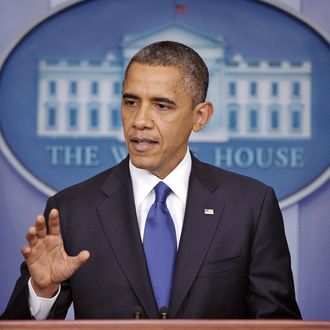
After being forced to issue statements on deporting Piers Morgan, allowing several states to secede from the union, and a request to build a Death Star, the White House has had enough. On Tuesday, it quadrupled the number of signatures that must be collected for an official response on its “We the People” website to 100,000. Macon Phillips, the White House director of digital strategy explained that use of the petition site has increased drastically, with nearly 10 million signatures collected. Previously, the site raised the threshold for a response from 5,000 to 25,000 signatures, and Phillips said the latest adjustment will “ensure we’re able to continue to give the most popular ideas the time they deserve.” The move may keep the site from devolving into nothing but a method for trolling the White House, but petitions such as the recent demand to “officially recognize the Sasquatch as an indigenous species,” aren’t the only reason many people see the site as a joke.
When the site launched in September 2011, President Obama said it would help him keep his promise to “make government more open and accountable to its citizens,” by “giving Americans a direct line to the White House on the issues and concerns that matter most to them.” It’s no surprise that the site sparked a large number of absurd petitions to “nationalize the Twinkie industry” and “nuke everything,” but boilerplate answers to legitimate questions and slow response times damaged the site’s credibility even more. Advocates for legalizing marijuana complained that Obama’s drug czar didn’t even answer the question in his response to their petition, and U.S. News and World Report noted last month that the administration responds to some petitions before they reach the threshold, while others with tens of thousands of signatures still haven’t received an answer. (Such as the call to “Legally recognize Westboro Baptist Church as a hate group,” the only unanswered petition on the site that meets the new 100,000 signature threshold.)
In response to a demand to “take these petitions seriously instead of just using them as an excuse to pretend you are listening,” Phillips insisted that the petitions do “spur discussions of important policy issues here at the White House.” He cited the administration’s crackdown on online puppy mills and explanation of its policy on online piracy as some issues that were brought to light via “We the People.” Phillips also noted that “gathering enough signatures to meet the signature threshold does not guarantee that the Administration will change our policy on a specific topic,” which is obvious, but still the source of much of the disappointment with the site. “We the People” gives the Obama administration an opportunity to engage with people online and unveil certain policies, but for citizens it’s not exactly a direct line to the White House. It’s more like leaving a message on the president’s answering machine. It’s better than not even having his number, but people need to keep in mind that no matter how many signatures they collect, the president probably isn’t going to offer a satisfactory answer on Sasquatch.






























